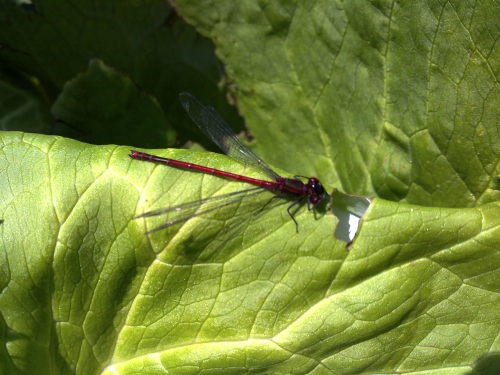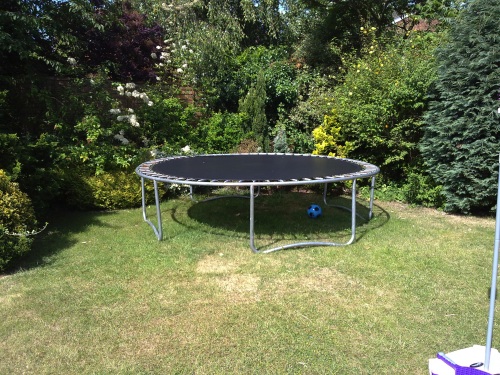Review: Nokia N97 Review - Part 2 - Touch-screen multimedia
This is part of our multi-part, multi-author review series on the Nokia N97. See also:
Camera (stills)
I commented previously that the N97 seems (not unnaturally, given the naming of the device) to have been given the stills camera sensor and software of the N96, itself very similar to that in the N95, N82 and N85, but with more mature control software and algorithms, resulting in photos with better colour handling and as-good-as-it-gets capture, display and save speed.
This is backed up by a super shutter key, very responsive and nicely positioned (unlike the sunken monstrosity in the N96), and a large, resistive touch screen which is useable in all but the very sunniest conditions.
In short, the N97 will please most people in the stills department. Here are some sample images, taken in various conditions, click on each to download or enlarge:
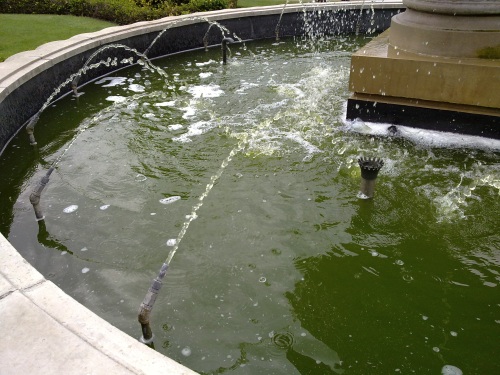
Click on each image to enlarge or download
Of note in low light is that the use of dual LED flash is strictly for fun snaps, it's simply not bright enough to compete with a standalone camera or the older N82, both of which have a proper Xenon flash. Here's a low light sample, showing a range (a metre or so) for which it's just about adequate:
One pertinent question, of course, is by how much the stills are better than identical shots taken on, for example, the Nokia N95 Classic, a well known standard. Taking a shot on the two devices in sunlight and zooming in just the very central portion, we should be able to see differences in image processing:
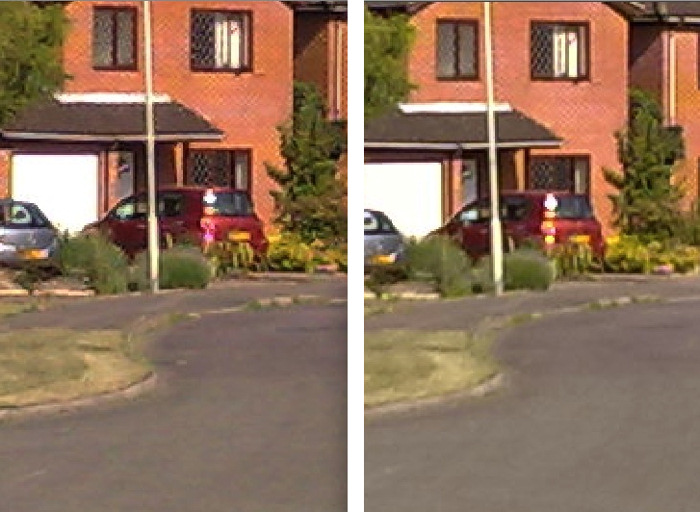
Left: N95, Right: N97 blowups...
It's easy to see small advances in photo processing algorithms made by Nokia in the intervening two and a half years. They're certainly not visible to the naked eye, looking at a print and, indeed, you have to look closely even when artificially blowing up an image, as here, but the differences are there, with more natural looking edge enhancement. They're certainly not enough to warrant going out and buying an N97 over an N95 or N82 etc, but it's good to note them all the same.
Photo display and editing
Although based on the same S60 5th Edition code as the much cheaper 5800 XpressMusic, the N97 adds the 'Nseries' applications, including a dedicated Photos Browser, which can be thought of as Gallery Plus. In truth, Gallery on the 5800 was very usable and seemingly lacked nothing (other than a lick of speed), but Photos at least makes it obvious that 'this is how to get to your photos', whereas Gallery tried to cover all media types. Both approaches have their merits, of course. Photos also offers a more obvious Share online link and offers the usual Nseries filters for photos by month or tag.
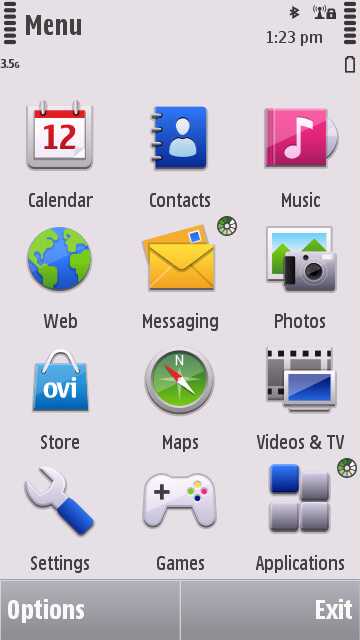
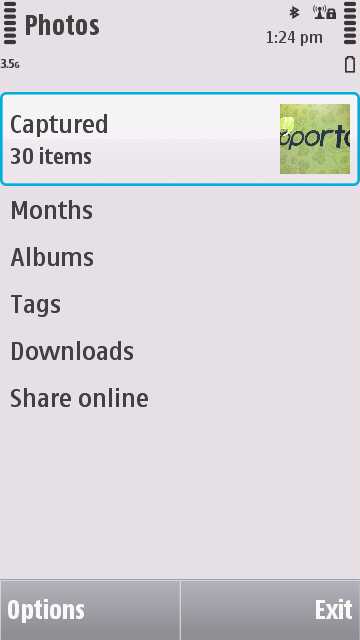
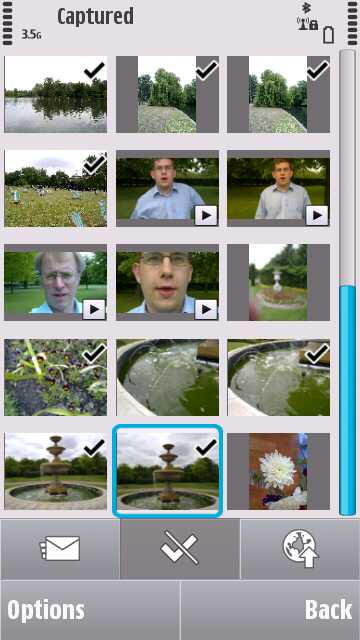
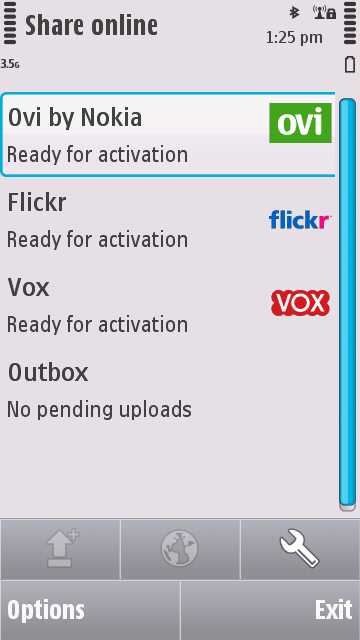
Editing photos is the usual 'tap and pick from the grid of options' approach and works well for crude adjustments, before sending on via MMS, Bluetooth or email (at full resolution, unlike the way the iPhone works incidentally). The overall speed of photo handling is quite a bit faster than on the 5800, again thanks to the faster processor, especially evident when zooming into a 5mp image using either zoom up/down hardware keys or the on-screen controls.
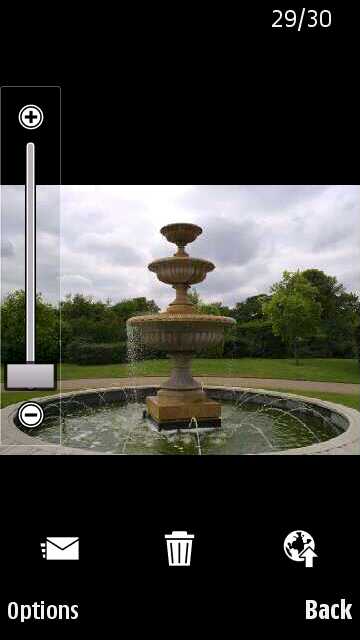
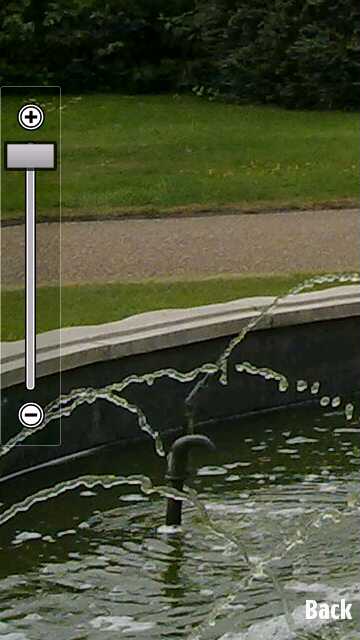
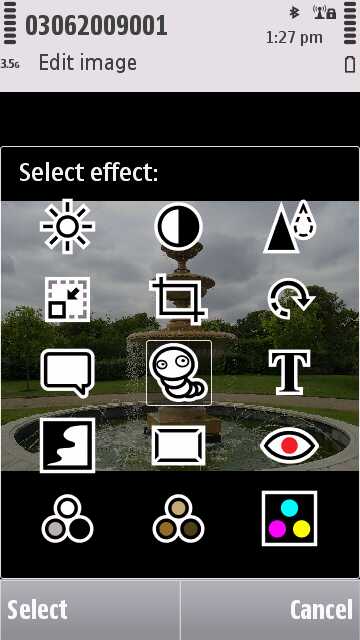
Camera (video)
The same N96 comparison applies to video, though in this case it's arguably not a good thing. You see, I've already demonstrated the differences in video focus between the N95/N82 era cameras and the N79/N85/N96 ones. The latter are all great at videoing subjects further away than a couple of metres, so panning around a scene on holiday or filming your kids sports day will be absolutely fine. The former are optimised for filming subjects a metre or two away, making them great for videoing friends and family in the same room or at the same table. So it all depends on what you want from video capture in a smartphone. Personally, I think the shift from close-up/people to far-away/landscapes is a bad thing, but this one's your call.
Sample (in sunlight), click to download or play (raw MP4 format):
As on the Nokia 5800, there's the choice of capture frame sizes, but here they're just limited to the top three: VGA, nHD and QVGA, which is sensible. As noted in the video above, there seems to be a volume problem with current v10 firmware. My gut feeling is that this is a software issue and that changing a few parameters (e.g. auto-gain) will fix the problem.
Video display and editing
In analagous fashion to Photos, there's now a root level mini-application 'Videos and TV', giving shortcuts to saved or captured videos and to the usual S60 Video centre 'feeds'. Am I the only one who never uses these? (I find the dedicated YouTube Mobile site and other Flash media types - to name but two - are of higher quality and wider content)
Most (but not all) MP4 files play without issue on the N97 - I do despair a little of people criticising phones for 'not playing back videos', implying that there's some magical common format that everything should be able to handle. The fact is that (sadly) digital video is still a massive, massive cauldron of competing codecs, bitrates, frame rates, resolutions, and so on, and it's a miracle that most devices play as many videos as they do. Most MP4 and WMV and FLV files I threw at the N97 played perfectly, but bear in mind that the one you want to play will doubtless be one of the exceptions!
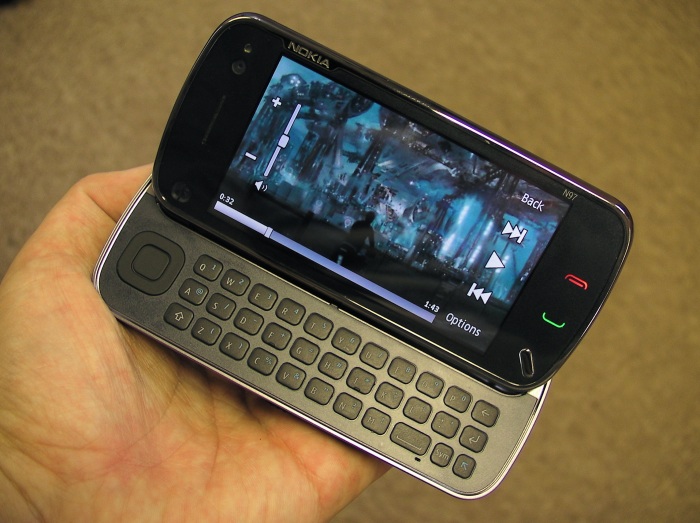
In many months with the 5800, I've become used to occasional stutters during video playback, while the processor catches up and sorts itself out - the faster chip inside the N97 had much less of a problem and video watching was generally an utter pleasure. The speakers aren't very loud though and you'll need a reasonably quiet environment.
The standard Nokia TV out system is again present and correct, for playing videos out through at full resolution through a composite connected TV set, although the need for this is somewhat negated by the fact that videos play at near full resolution on the device itself, it having a 640 pixel-wide screen. Partly because of this, and partly because (I suspect) very few owners actually used the TV out functions, Nokia has saved a few euros per device and opted not to ship a TV out cable - interested parties can re-use an older cable from a N95 or similar, or perhaps buy the cable from Nokia's online shop.
Video editing is much as on all previous S60 devices from the last couple of years (since the full all-singing, all-dancing editor in the N95 Classic), you get the chance to 'Merge' videos, 'Cut' them (i.e. crop), change the audio track or add some titles. Basic stuff, but arguably all anyone needs on a phone - interestingly, this is much the same video editing feature set as on the newly announced iPhone 3GS, for which the N97 is one of the main competitors.
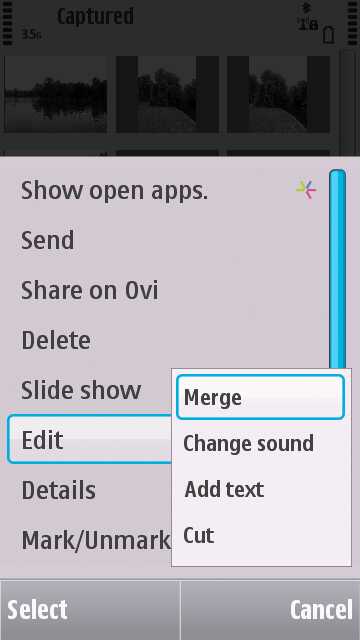
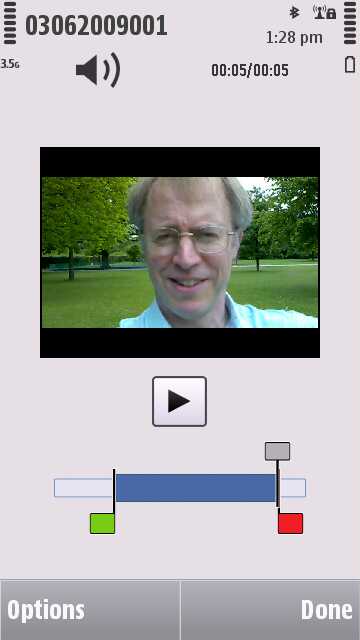
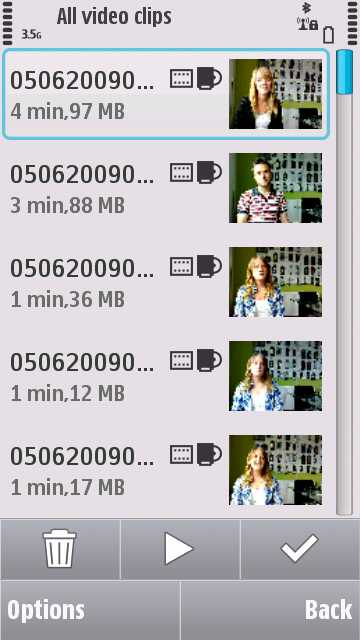
iPlayer and Video feeds
The BBC's famed iPlayer service is now (today, June 11th 2009) available for the N97 for UK users, in the same widget form that was used for the 5800 XpressMusic:
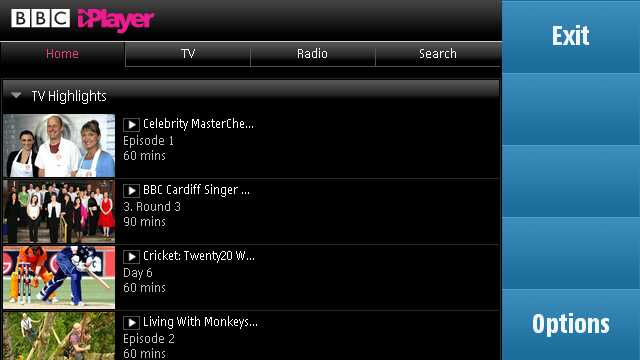
As with general video watching, the extra processor speed helps enormously to keep the streamed and downloaded programmes from stuttering and buffering, though the larger display does make video artefacts somewhat more noticeable.
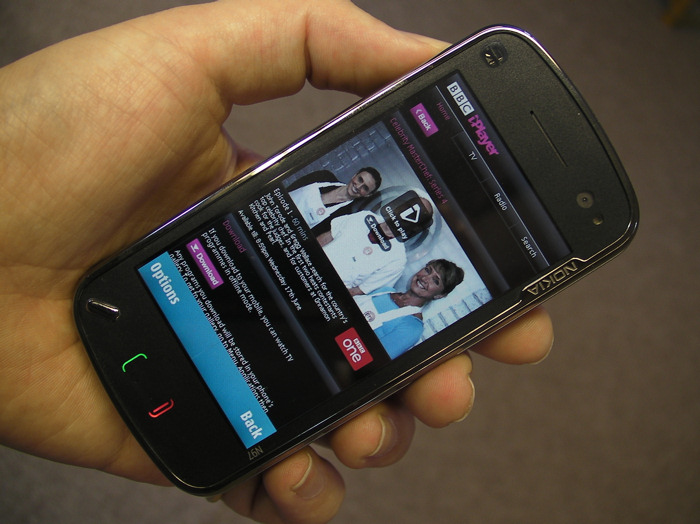
YouTube watching is quite practical using the Flash video mobile YouTube site (m.youtube.com), as on the 5800 XpressMusic, though a S60 5th Edition-optimised version of Google's native S60 YouTube application is expected shortly.
Music playback and purchase
Music player is the same as on the 5800, it's the standard S60 player with touch support. No gapless playback still, a common criticism, but that apart it's a model of a very functional music player, complete with playlists, filters, searching, equaliser. Aided by speakers which are pretty good (but quiet) and a headset of reasonable quality, music is another area that it's hard to criticise. The main output is 3.5mm, but with a breakout lead supplied to offer a way to connect higher quality headphones and yet still benefit from the hardware playback controls. These in turn take on extra significance because the N97 itself lacks any physical or virtual music controls that work from within any application.
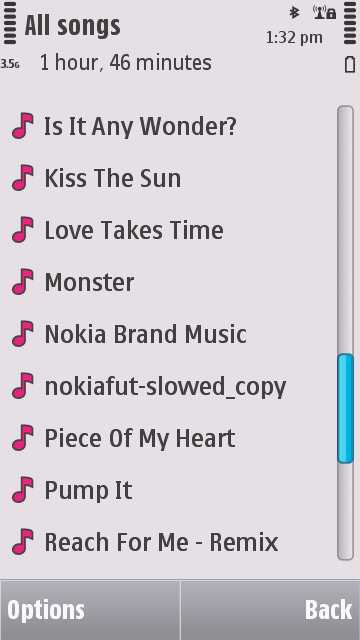
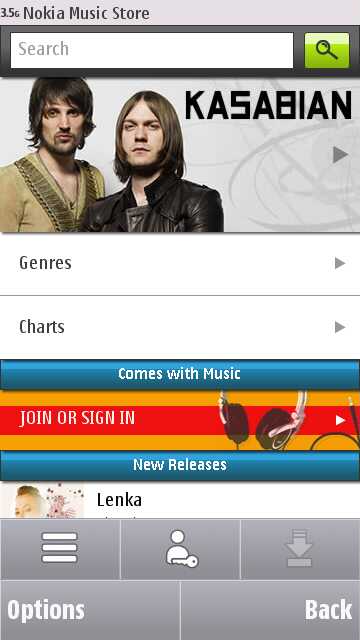
The Nokia Music Store is now well established in most N97 markets, peddling its usual well-stocked variety of DRM-laden WMA tracks. It's great for grabbing specific songs that you really want and that you need in a hurry, but as ever I'm dubious about the wisdom of investing too much in music tracks which have significant restrictions embedded within - as ever, most of your music will come from DRM-free stores or from your own CD importing.
Shipped with the N97 is Nokia's Ovi Suite, providing multimedia transfer to PC-side client applications, Nokia Photos and Nokia Music - these work well, but are considerably more processor-hungry than the older bare bones PC Suite used to be. We'll take a more detailed look at Ovi Suite in a future review. On the Mac, the necessary Nokia Multimedia Transfer profile is not yet in place, nor is an iSync profile, but both of these should be put in place by Nokia by the time the N97 hits retail across the world.
Podcasting
Podcasting has been ubiquitous in the last few years on S60 and it's equally as welcome here, though I still look forward to the day when I can 'subscribe' to a web feed in Web and have the phone recognise that it's a music feed and offer to import it into my Podcasting subscriptions without me having to fiddle around copying and pasting feed URLs manually.
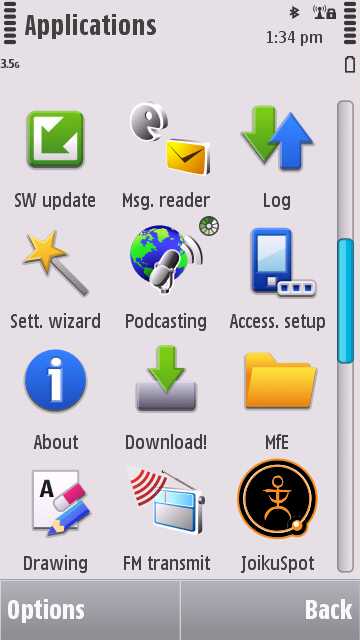
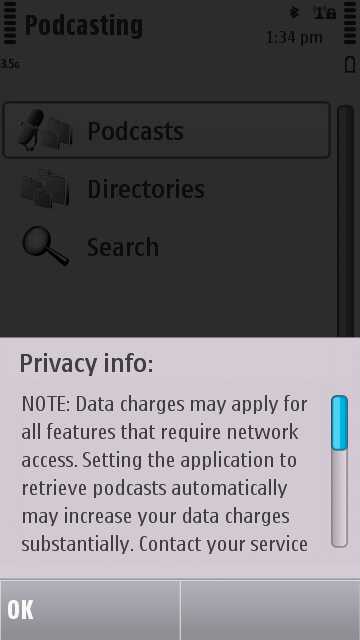
Radio
The Music icon on the N97 leads to a short list of choices, one of which is Music library, leading to Music player, of course. Another is Radio RDS, the text enhancement system which puts up station IDs and other relevant information in areas for which this is supported. As with most phones, the FM reception enabled by just a short length of headphone lead isn't great and you'll be unlikely to get more than a handful of stations.
On the transmission side, the N97 follows the N78 and N79 in having a built-in FM transmitter. This is designed so that you can stream music or spoken word audio from your phone into your car's existing radio system, without having to worry about making a physical 'aux' connection.
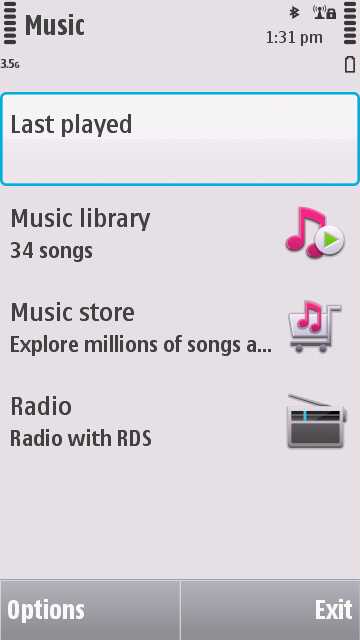
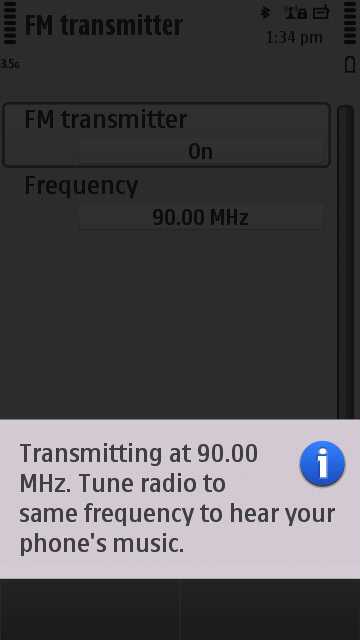
As with the N78 and N79, transmission power is deliberately kept low but you'll have no problems using it in-car apart from the usual FM interference issues. It's also worth noting that the FM transmitter is disabled in some markets due to legal requirements.
On other recent smartphones, Nokia has included Internet Radio as an 'equal' partner to the FM radio, but this component isn't ready for the prime time on S60 5th Edition yet, it seems, we're still waiting for Internet Radio for the 5800. I'd expect this to be both put up for download and also included in a future N97 firmware update.
UPnP
Unlike recent Nseries devices the retail release of the N97 does not have UPnP software (what Nokia calls Home network). It was present in earlier prototypes and a UPnP server for Windows PCs (a rebranded and cut down version of TwonkyVision) is included as part of Ovi Suite, so I would expect to see the necessary software added to the Nokia N97 in the first major software update.
In the next part to this extended review of the Nokia N97, Rafe will be giving his take on the hardware and base software in intricate detail.
We'll revisit some of the multimedia capabilities once we have some more real world usage under our belts (e.g. a bigger gallery of example images).
Steve Litchfield, All About Symbian, 11th June 2009
Reviewed by Steve Litchfield at


